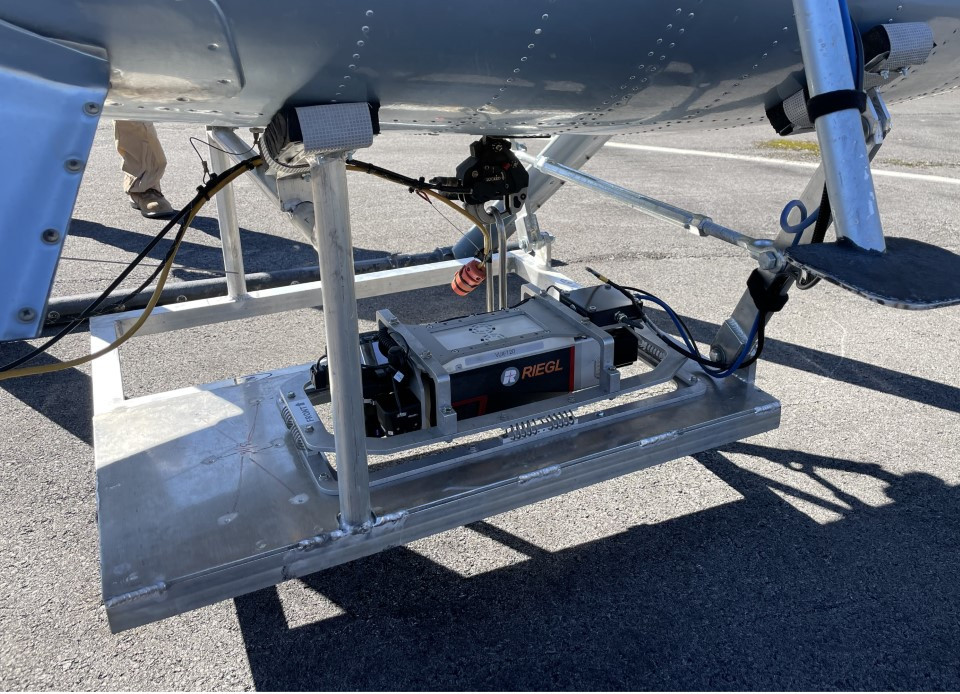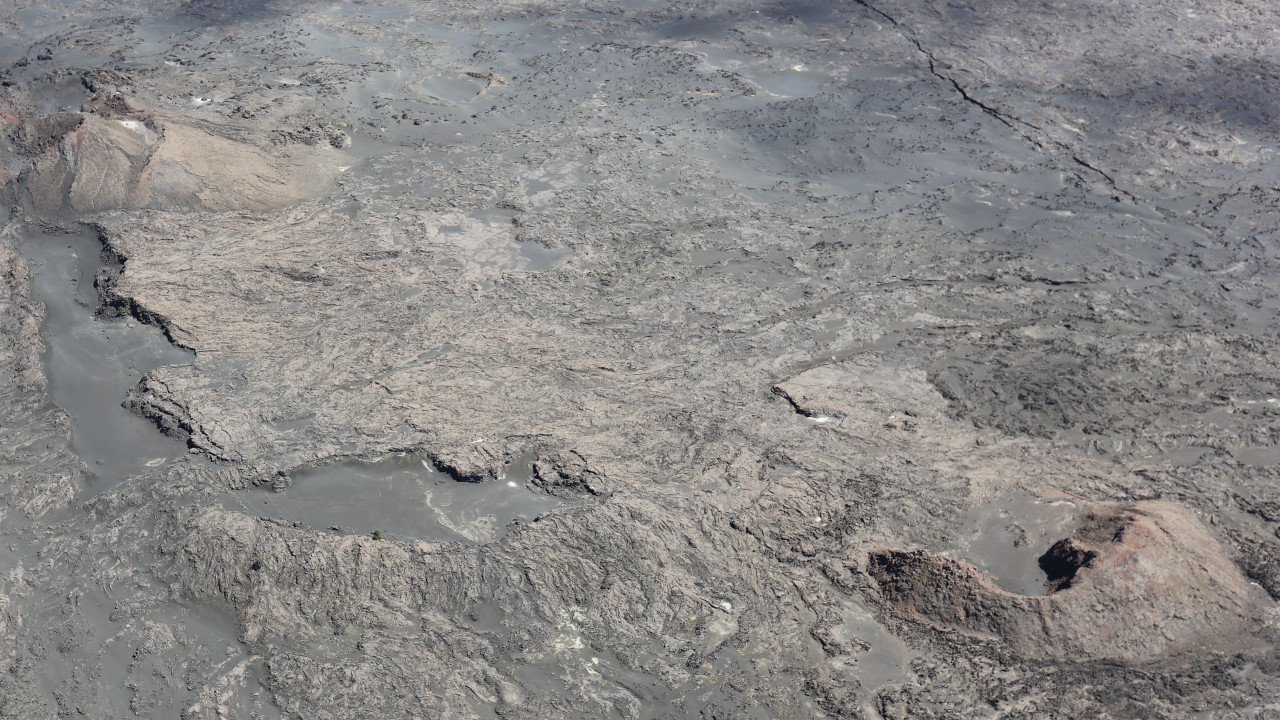(BIVN) – This week’s USGS Volcano Watch article was written by Hawaiian Volcano Observatory geologist/GIS specialist Mike Zoeller:
Topographic mapping has been a key component of volcano monitoring for decades, helping scientists to study morphologic changes and predict the paths of lava flows during eruptions. Lidar systems are a preferred mapping tool and the USGS Hawaiian Volcano Observatory (HVO) now has a lidar system of its own to generate mapping products more frequently than ever before.
Lidar systems have become a preferred mapping tool due to the precision of their measurements and fine-scale resolution of their data products. Lidar (short for “light detection and ranging”) systems operate by emitting many thousands of laser pulses per second, then recording the precise return times of the light waves after reflecting off different features in three-dimensional space. On Hawaiian volcanoes, these features are usually the surfaces of lava flows.
The return times are used to automatically calculate distances to those features, providing their X, Y, and Z coordinates when the instrument’s position is precisely known. Compiling all the individual measurements results in a “point cloud” depicting the surveyed area.

Left: A snapshot of the point cloud from HVO’s September 5, 2024, lidar test flight along Kīlauea’s Southwest Rift Zone, providing an east-looking oblique view of Pu‘ukoa‘e (upper left) and another unnamed cinder cone (lower right). Points are shown in true color thanks to a camera incorporated with the lidar system, and they taper out to the upper right of the frame, which was the edge of the planned survey area. Tick marks provide an approximate sense of scale, with the width of this view spanning approximately 450 m (1,475 ft). Right: Approximately the same view from a HVO helicopter overflight on February 6, 2024. USGS image by M. Zoeller.
For over 15 years, lidar systems have been used intermittently at Kīlauea and Mauna Loa volcanoes. These have included aerial systems such as the one contracted by HVO for a survey of Kīlauea in 2019, as well as ground-based terrestrial systems like the one HVO borrowed from the U.S. Army Corps of Engineers’ Cold Regions Research and Engineering Laboratory (CRREL) for surveys of Halemaʻumaʻu in 2021–2023.
Both system types require a GPS to record their position during the survey, but aerial systems also require a high-precision inertial measurement unit (IMU) to track directional roll, pitch, and yaw. These parameters are used for minute corrections of the instrument’s position and orientation, allowing the measured features to correctly locate in the point cloud.
Lidar systems are complex, and therefore expensive, so prior surveys on the Island of Hawaiʻi could only be conducted when permitted by the availability of funding and/or collaborators. That changed with Congress’s passage of the Additional Supplemental Appropriations for Disaster Relief Act of 2019, which provided HVO with funds to purchase a lidar system among other upgrades in the aftermath of Kīlauea’s 2018 eruption.
In April 2022 HVO used the funds to purchase a Riegl VUX-120 airborne lidar system, mountable to a helicopter and enabling surveys of more expansive areas than a terrestrial system. The instrument arrived at HVO in November 2022, but it was not yet operational. Actually, using the VUX-120 would require the building of a mount to attach it to HVO’s contracted helicopter and integrating the system with a control computer along with other accessories.

USGS: “HVO’s Riegl VUX-120 aerial lidar system mounted to the belly of a contracted helicopter just before the September 5, 2024 test flight.” (Photo by D. Filiano, U.S. Army Corps of Engineers)
The University of Hawaiʻi at Hilo’s Spatial Data Analysis and Visualization (SDAV) Lab provided a template design for a helicopter mount, and for the integration, HVO again leaned on their collaborators at CRREL—who have operationalized various lidar systems of their own, including another VUX-120. The setup work was completed this past August.
In early September, a technician from CRREL visited HVO to teach local staff how to use the VUX-120 and to assist during its first operation. The system successfully completed a ground test at HVO’s warehouse in Hawaiʻi Volcanoes National Park on September 2, followed by its first flight aboard the contracted helicopter on September 5. For the first flight, HVO decided to survey the vicinity of the June 3, 2024, Kīlauea Southwest Rift Zone eruption.
The test flight proved to be a resounding success; data were captured at a density of approximately 60 points per square meter (yard), enabling the construction of a high-accuracy digital elevation model (DEM) of the June 3 eruption vicinity. Some lessons were learned to further improve data quality in the future, which is especially important when the resulting DEMs may be used for critical assessments of volcanic hazards.
HVO continues to rely on photographic surveys for rapid-response mapping of topography during eruptions, but the VUX-120 will provide more definitive datasets when time allows for its slightly longer-duration surveys (not possible during the recent, brief Kīlauea East Rift Zone eruption). To our knowledge, this is the only helicopter-mounted lidar system operated by anyone in the USGS, so there may be opportunities to use it elsewhere in support of hazard assessments and scientific research.
HVO sincerely thanks the SDAV and CRREL teams for their support while we take our first steps into the world of airborne lidar, and we look forward to further collaboration in the future.


by Big Island Video News8:16 am
on at
STORY SUMMARY
ISLAND OF HAWAIʻI - The USGS Hawaiian Volcano Observatory now has a lidar system of its own to generate mapping products more frequently than ever before.